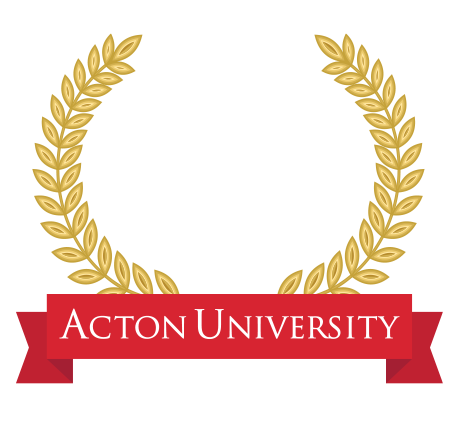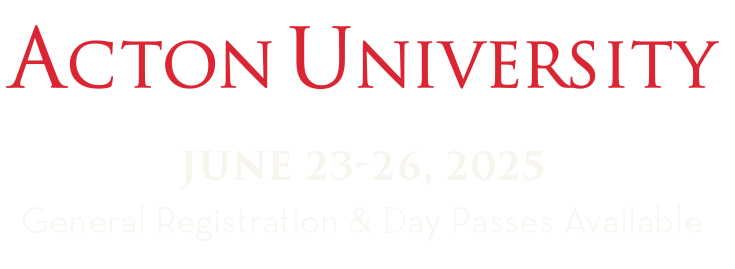What Weigel calls the “Standard Account” gives primary credit for the Revolution of 1989 to former Soviet leader Mikhail Gorbachev. Advocates of this interpretation argue that two tenets of Gorbachev’s policy proved to be the conditions sine qua non for the eventual success of the Revolution: the Soviet army would no longer intervene when its allies chose to go their own way and the Soviet party would no longer demand exclusive communist control of central and eastern Europe.
While conceding the importance of Gorbachev’s reining in his armed forces as the Soviet satellite regimes tottered, Weigel nevertheless argues that it is “simply realistic to suggest that by the time the Revolution of 1989 gained critical mass in the fall and winter of that year, Gorbachev really had no choice but to acquiesce in the demise of the Soviet outer empire” and “the Soviet economic crisis had become so desperate, and the Soviet need for Western financial and other economic assistance so great, that Gorbachev simply had no rational alternative but to cut his losses and, out of loss cutting, to gain whatever degree of leverage was possible for the next phase of his attempt to salvage reform communism in the USSR.” While the “Standard Account” explains the non-violent nature of the Revolution, it does not explain how the unprecedented revolt of workers and intellectuals working together ever even started.
The obverse of the “Standard Account” is the “Realistic Account” which credits the birth and eventual success of the Revolution to Ronald Reagan. According to this interpretation, the Reagan administration’s decision to link the human rights issue and the disarmament issue (which became even more important after the deployment of Pershing II and cruise missiles in Europe in the early 1980’s) did more than encourage the morale of dissidents behind the Iron Curtain. The Reagan Doctrine of supporting anti-communist resistance forces around the world and the controversial Strategic Defense Initiative program also weakened the relative strengths of the Soviet military and economy by placing intolerable pressure on their already-limited resources. Despite the importance of all these factors, Weigel argues, they cannot account either for the singularity of the Revolution of 1989.
In addition to the advocates of either of these two explanations, there are proponents of the “Diplomatic Account” who acknowledge the crucial impact of the 1975 Helsinki Final Act and the “Helsinki review process” that it mandated with the subsequent collapse of the communist regimes. Weigel is fairly generous in his assessment of these diplomatic contributions, contending that “the review conferences provided unprecedented opportunities to remind Western audiences of the linkage between human rights and security and cooperation in Europe, while assuring activists in communist countries that their lifeline to the West...had not been cut.” While he credits the Helsinki monitoring groups which sprung up across the Soviet empire with being the “intellectual and organizational incubators of much of the leadership of the Revolution of 1989,” Weigel notes that “there is yet no way to explain, within the documents and structures of the Helsinki process itself, why this effort to press human rights took hold.” Nonetheless, the very success of the Helsinki process suggests that a moral revolution did precede the political revolution.
The fourth major interpretation of the Revolution of 1989 which is au courant is the one that Weigel dubs the “Great Ideas Account,” perhaps best exemplified–at either extremes of the political spectrum–by the empirical explanations of the economic “delayed modernization” or the ideological explanations à la Francis Fukuyama’s Hegelian-tinted essay “The End of History?,” published in the fateful year itself. Nevertheless, for all their strengths, these two “Great Ideas” explanations suffer from their failure to account for both the reality of evil and the consequent transcendent hope which, Weigel notes, “has a powerful world effect: it keeps politics in line, and sets a barrier against the perennial human temptation to absolutize the politics.”
Having exhausted in the first part of his book the four major accounts of the revolt against communism, Weigel asserts in the second that “the Revolution of 1989 was, at its heart, a triumphant revolution of the human spirit: an expression of the final revolution, and of the transcendent nature of human aspiration.” Following Czech dissident and now president Vaclav Havel, Weigel contends that the communist system must be understood as a culture of the lie and of mendacity, a “world of appearances trying to pass for reality.” Havel himself has eloquently described elsewhere the horrible, inexorable logic of this system:
Because the regime is captive to its own lies, it must falsify everything. It falsifies the past. It falsifies the present, and it falsifies the future. It falsifies statistics. It pretends not to possess an omnipotent and unprincipled police apparatus. It pretends to persecute no one. It pretends to fear nothing. It pretends to pretend nothing.
According to Weigel’s analysis, the corruption of such a system metastasized at five levels, all interrelated and together having a devastating impact on the moral environment of central and eastern Europe: the personal, the relational, the legal, the historical, and the linguistic. And, as Havel notes, it was only through grappling with this reality and refusing to acquiesce to it that a revolution was even thinkable, much less possible.
The bulk of the second part of The Final Revolution (and of the book itself) is spent documenting this theme throughout the history of communist government, from its installation in Russia in 1917 to its final defeat there in 1989: from the gradual submission to the culture of the lie, to the slow revolt against it. During this entire period which Weigel sketches, drawing his evidence equally from historical documentation and personal interviews, the one consistent line regularly depicted is the role the Catholic Church played in confronting the unprecedented situation of the totalitarian state which communism represented. Weigel takes his reader through the Church’s own development–with all of the vicissitudes thus implied–in understanding its role from intense resistance and direct confrontation to the Ostpolitik search for a modus vivendi and the Church’s internal evolution in its understanding of human rights.
All of this sets the stage for Weigel’s main focus: Pope John Paul’s unique role in the final turning of the tide against communism. In a nutshell, while carefully avoiding even the hint of a conspiratorial “Great Plan” theory, Weigel nonetheless argues that “it was not an accident that the vicar of Christ had been called from Poland at this moment in human history” and that “he would be, in his own way, a revolutionary. But the revolution to which he called his people would be the final revolution, the revolution of the spirit.”
As Weigel duly cautions, these affirmations should not be read politically, but pastorally. John Paul II viewed, and continues to view, his role as primarily pastoral. But as Weigel notes
John Paul also seemed to sense that, precisely by being a vigorous pastor, he could have an impact on the politics of nations, he understood communism, and communists, from the inside. He had measured its vulnerabilities in the crucial sphere of the human spirit. He was determined to lead, out of a deep sense of vocational responsibility and a deep conviction that God had put him where he was precisely so that he could say, again and again, “Be not afraid!”
And once the circle of fear and mendacity was broken, the other forces at work in the complex moral, political, and economic cauldron of central and eastern Europe could boil over freely into the events of the Revolution of 1989, which Weigel portrays principally through the medium of personal testimonies collected mainly in Poland and the Czech lands.
This noteworthy narrative in Weigel’s Final Revolution is followed by a very brief third section which contains some of the author’s suggestions for the future role of the Church in consolidating democracies in the countries of the old Warsaw Pact. This reviewer’s historical and philosophical disagreements with some of Weigel’s assertions in his conclusion, however, do not in the least overshadow his appreciation of Weigel’s contribution to the understanding of this momentous period in recent history.
When Pope John Paul II visited then-Czechoslovakia on April 12, 1990, soon after the fall of the communist regime, President Havel welcomed him to a gathering of cultural and non-Catholic leaders by reminding him of a line from a poem written by the Pontiff when he was Archbishop of Cracow in 1974. These were Havel’s words:
In one of your poems, you asked: “Can history ever run counter to conscience?” What you intended to say in the exclamation is clear: that history cannot run counter to conscience forever. You were right and with you all those who did not lose hope.
Havel understood what had happened in his country was the victory of conscience over history.
In the final analysis, the collapse of communism was neither a partisan victory or a personal triumph. The Revolution of 1989 was the vindication of the hope in the human spirit, a spirit created in the image and likeness of the Lord of History who has brought all of his children through the long, dark night of communism.






